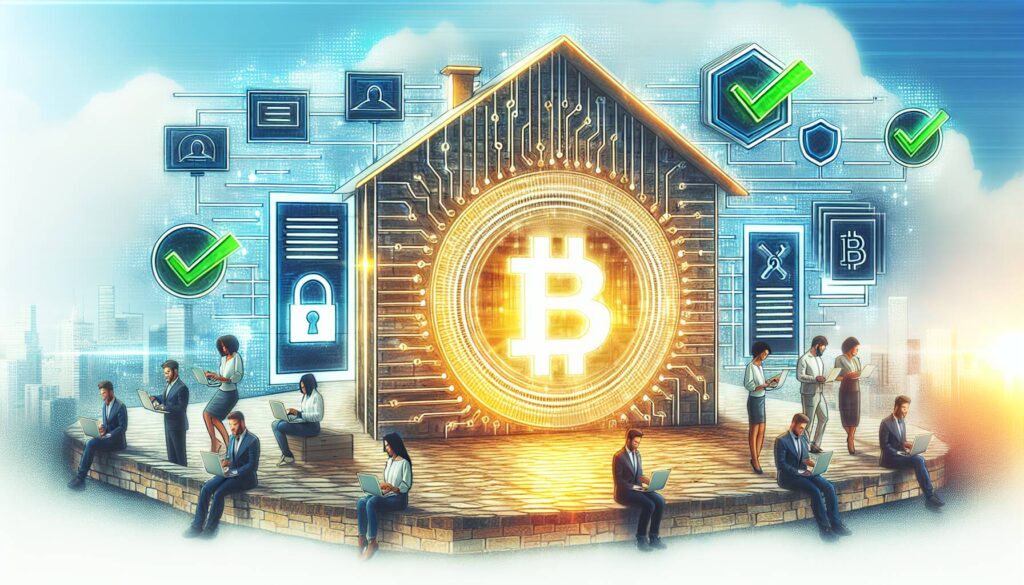In a notable shift within the cryptocurrency landscape, discussions among investors are increasingly highlighting the tokenization of real-world assets (RWAs) such as stocks, bonds, and real estate, as underscored in a recent report by Bank of America (BAC). While U.S. dollar-backed stablecoins have traditionally dominated the discourse, this emerging focus represents the onset of a transformative journey towards fully blockchain-based transactions.
According to the BofA report, the transition will require substantial infrastructure development, yet it holds the promise of a new era characterized by 24/7 accessibility, instant settlements, and improved liquidity. This evolution is largely powered by smart contracts, which ensure that transactions comply with regulations.
Tokenizing real assets not only brings traditional investments into the digital fold but also allows for fractional ownership, making these typically illiquid markets more accessible to a broader range of investors. A significant illustration of this trend is the Dubai Land Department’s recent launch of a tokenized real estate platform. This initiative aims to digitize an impressive $16 billion in real estate by 2033, enhancing investors’ ability to engage in fractional ownership.
Despite these advancements, Bank of America noted concerns among investors regarding the potential impact on traditional banks, particularly Citi (C), where transaction services contribute around 40% to its earnings. Although there is apprehension about potential disruption caused by blockchain technology, the growing sentiment suggests that Citi’s established expertise and adaptability in fintech may serve as protective factors against such risks.
This movement towards the tokenization of real-world assets signifies a pivotal moment in the larger narrative of blockchain technology’s adoption for tangible applications. As this trend continues to unfold, stakeholders across various sectors are poised to monitor the implications for investment landscapes and traditional financial institutions.
Read more: Stablecoin Supply to Grow as Much as $75B Following Passage of GENIUS Act, BofA Says.

Tokenization of Real World Assets and Its Impact
The growing trend of tokenizing real-world assets (RWAs) on blockchain technology is set to transform various markets. Here are the key points:
- Dominance of Dollar-Backed Stablecoins
- U.S. dollar-backed stablecoins are currently the primary focus in cryptocurrency discussions.
- Emergence of Tokenization
- Increasing investor interest in the tokenization of assets like stocks, bonds, and real estate.
- Marks the start of a long-term transition to blockchain-based transactions.
- Infrastructure Development Needs
- Significant advances in infrastructure are necessary to support tokenized transactions.
- Promises improved accessibility and instant settlement for global transactions.
- Benefits of Tokenization
- Enables fractional ownership of traditional assets.
- Increases liquidity and eases the trading process for various asset classes.
- Case Study: Dubai Land Department
- DLD launched a tokenized real estate platform aimed at digitizing $16 billion in assets by 2033.
- Introduction of fractional ownership enhances access to previously illiquid real estate markets.
- Investor Concerns
- Potential disruption to Citi’s transaction services, which is crucial to its revenue.
- Concerns exist regarding the adaptability of traditional banks in the face of blockchain advancement.
- Overall Significance
- Tokenization represents a crucial step towards the practical adoption of blockchain technology.
- It has the potential to influence investment strategies and asset management practices significantly.
Tokenization Revolution: A Competitive Analysis of Real-World Asset Integration
The recent emphasis on tokenization of real-world assets (RWAs) highlights a transformative shift within the financial ecosystem, with major players like Bank of America (BAC) leading discussions. This movement not only underscores the growing importance of blockchain technology but also introduces a competitive landscape where established financial institutions and innovative startups must navigate new opportunities and challenges.
Competitive Advantages: One of the most compelling advantages of tokenizing assets such as real estate, stocks, and bonds is the democratization of investment. By enabling fractional ownership, more individuals gain access to markets that were traditionally reserved for wealthy investors. This paves the way for enhanced liquidity, as assets can be traded 24/7 across global jurisdictions without the long settlement times associated with conventional transactions. The ability of smart contracts to ensure compliance further strengthens the credibility of these transactions, making blockchain a robust alternative for moving capital.
Moreover, initiatives like the Dubai Land Department’s tokenized real estate platform exemplify practical applications that could facilitate vast amounts of capital flow, stimulating economic growth and innovation. As tokenization becomes more mainstream, it can attract a diverse range of investors who are eager for new avenues of engagement and portfolio diversification.
Competitive Disadvantages: However, this burgeoning trend is not without its pitfalls. Concerns about potential disruptions to traditional banking services, particularly for institutions such as Citi (C), have surfaced. Given that a significant portion of their revenue is derived from transaction services, any shift towards blockchain could threaten existing income streams. Critics worry that banks might struggle with the rapid technological changes and fail to adapt, risking a loss of customer trust and market share.
Furthermore, the pressing need for significant infrastructure investment to support these advancements could deter smaller players unable to shoulder the costs. The pace of regulatory adaptation poses another challenge, as regulatory bodies worldwide grapple with appropriate frameworks for this new landscape—potentially stifling innovation or creating barriers for entry in certain regions.
Who Stands to Benefit or Be Challenged? Investors with a keen interest in alternative assets may find tremendous upside in the tokenization trend, gaining access to previously illiquid markets that offer asset-backed investment opportunities. Traditional banks and financial institutions willing to embrace blockchain technology could enhance their offerings and attract tech-savvy clientele. Conversely, institutions slow to adapt could see dwindling revenues and reduced relevance in the evolving financial framework, potentially ceding ground to agile fintech competitors that specialize in digital assets.

















